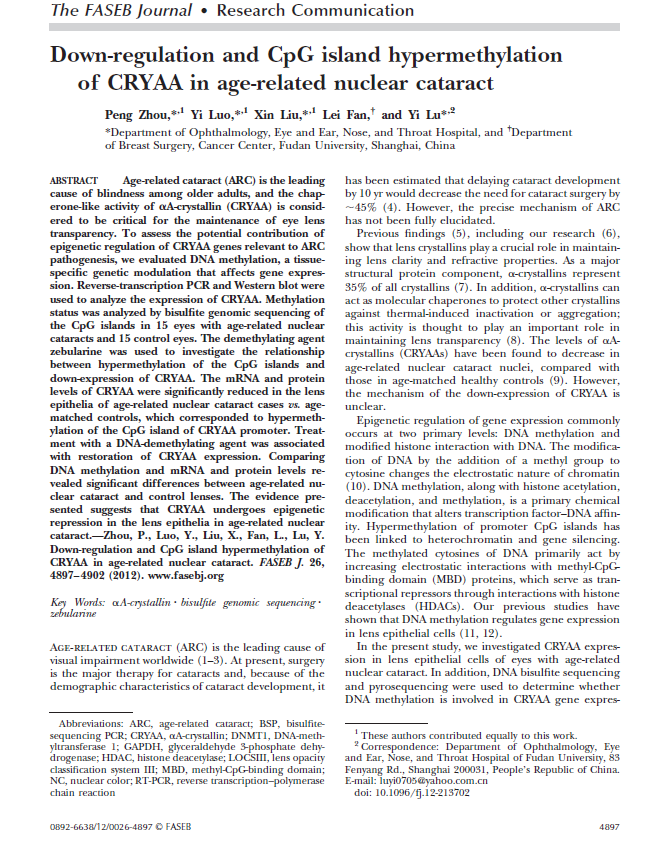
Author information
- 1
- Department of Ophthalmology, Eye and Ear, Nose, and Throat Hospital of Fudan University, 83 Fenyang Rd., Shanghai 200031, People’s Republic of China.
Abstract
Age-related cataract (ARC) is the leading cause of blindness among older adults, and the chaperone-like activity of αA-crystallin (CRYAA) is considered to be critical for the maintenance of eye lens transparency. To assess the potential contribution of epigenetic regulation of CRYAA genes relevant to ARC pathogenesis, we evaluated DNA methylation, a tissue-specific genetic modulation that affects gene expression. Reverse-transcription PCR and Western blot were used to analyze the expression of CRYAA. Methylation status was analyzed by bisulfite genomic sequencing of the CpG islands in 15 eyes with age-related nuclear cataracts and 15 control eyes. The demethylating agent zebularine was used to investigate the relationship between hypermethylation of the CpG islands and down-expression of CRYAA. The mRNA and protein levels of CRYAA were significantly reduced in the lens epithelia of age-related nuclear cataract cases vs. age-matched controls, which corresponded to hypermethylation of the CpG island of CRYAA promoter. Treatment with a DNA-demethylating agent was associated with restoration of CRYAA expression. Comparing DNA methylation and mRNA and protein levels revealed significant differences between age-related nuclear cataract and control lenses. The evidence presented suggests that CRYAA undergoes epigenetic repression in the lens epithelia in age-related nuclear cataract.
- PMID:
- 22889833
- DOI:
- 10.1096/fj.12-213702